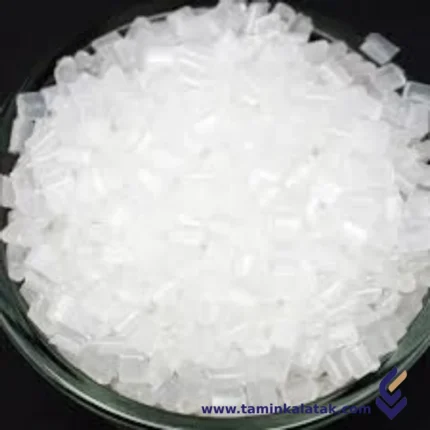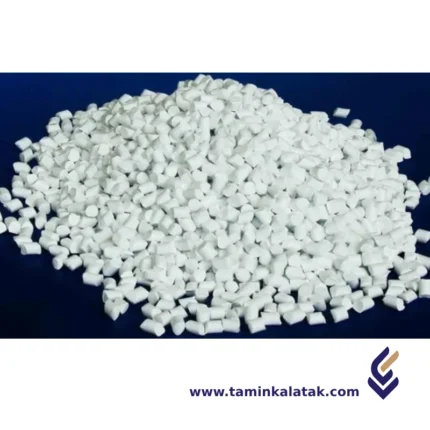Antistatic Masterbatch
Antistatic Masterbatch is a type of additive used in plastics to reduce or eliminate static electricity buildup. It is typically a concentrated blend of antistatic agents dispersed in a carrier resin, which can be easily incorporated into plastic materials during processing.
Structure
The structure of antistatic masterbatch consists of a polymer carrier resin combined with active antistatic agents. The carrier resin is chosen based on compatibility with the target plastic, such as polyethylene, polypropylene, or polystyrene, ensuring uniform dispersion during processing. The antistatic agents can be ionic or non-ionic compounds, often including ethoxylated amines, quaternary ammonium salts, or glycerol esters, which help in reducing surface resistivity. These agents migrate to the surface of the plastic over time, attracting moisture from the environment to dissipate static charges. Some formulations also include synergistic additives to enhance long-term performance or to provide immediate static dissipation. The concentration and type of antistatic agent determine the efficiency, duration, and application suitability of the masterbatch, making it a versatile solution for various industries such as packaging, electronics, and automotive components.Properties
Antistatic masterbatch possesses several key properties that make it effective in reducing static electricity in plastic materials. It has a controlled rate of migration, allowing the antistatic agents to move to the surface over time and attract moisture to dissipate static charges. The masterbatch is designed to be compatible with a wide range of polymers, ensuring uniform dispersion without affecting the mechanical properties of the final product. It provides both short-term and long-term antistatic effects, depending on the formulation, and can work in varying humidity conditions. Additionally, it does not significantly alter the transparency, color, or processability of the plastic. It is thermally stable, meaning it can withstand high processing temperatures without degradation. Some formulations are also food-grade compliant, making them suitable for applications in food packaging and medical devices. The electrical resistivity of the final product is reduced, preventing dust attraction, improving safety, and minimizing electrostatic discharge-related issues in sensitive environments like electronics and industrial manufacturing.Applications
- Used in plastic packaging such as films, bags, and containers to prevent dust accumulation.
- Applied in the automotive industry for interior plastic components to reduce static buildup.
- Used in electronics and electrical components to prevent electrostatic discharge (ESD) damage.
- Integrated into textile and fiber production to reduce static in synthetic materials.
- Utilized in industrial equipment like conveyor belts, storage bins, and plastic housings to prevent static-related handling issues.
- Found in medical and pharmaceutical packaging to maintain cleanliness and safety.
Advantages
- Effectively reduces static electricity, preventing dust attraction and improving product cleanliness.
- Enhances processing efficiency by reducing static-related handling issues during manufacturing.
- Improves safety by minimizing electrostatic discharge, which can be hazardous in electronics and industrial environments.
- Provides both short-term and long-term antistatic effects based on formulation.
- Compatible with various polymers, ensuring easy incorporation without significantly altering material properties.
- Can be formulated to be food-grade compliant, making it suitable for packaging and medical applications.
Disadvantages
- The effectiveness depends on humidity, as many antistatic agents require moisture to function.
- Some formulations have a limited lifespan, requiring reapplication or higher concentrations for long-term effects.
- May slightly affect optical properties, such as reducing transparency in clear plastics.
- In certain cases, migration of the antistatic agent to the surface can cause inconsistencies in performance over time.
- Can increase production costs, especially for high-performance or specialized formulations.
Smoothing Masterbatch
Smoothing masterbatch is an additive used in plastic manufacturing to enhance the surface quality of plastic products. It helps reduce roughness, improve gloss, and eliminate surface defects such as flow marks, weld lines, and die lines.
Structure
Smoothing masterbatch is typically composed of a carrier resin, functional additives, and processing aids. The carrier resin, often polyethylene (PE) or polypropylene (PP), ensures compatibility with the base polymer and facilitates uniform dispersion. Functional additives such as silicone-based compounds, waxes, or specialty lubricants are incorporated to reduce surface roughness and enhance flow properties. Processing aids help in minimizing defects like melt fracture, sharkskin, and flow marks by improving the polymer’s rheological behavior during extrusion or molding. The structure of the masterbatch is designed to be thermally stable and miscible with the target polymer, ensuring effective performance without negatively impacting mechanical properties. It is usually available in granular or pellet form, making it easy to handle and dose during manufacturing processes.
Properties
Smoothing masterbatch possesses several key properties that enhance the surface quality and processability of plastic products. It has excellent dispersion characteristics, allowing uniform distribution within the polymer matrix to ensure consistent performance. The masterbatch reduces surface roughness and enhances gloss by modifying the flow behavior of the molten polymer, preventing defects like melt fracture and flow marks. It also exhibits good thermal stability, maintaining its effectiveness even at high processing temperatures without degradation. Additionally, it improves lubricity, reducing friction between polymer chains and enhancing melt flow, which leads to better mold filling and extrusion performance. Smoothing masterbatch is compatible with a wide range of thermoplastics, including polyethylene, polypropylene, and polystyrene, and does not negatively impact the mechanical properties of the final product. Its ability to enhance surface aesthetics while maintaining structural integrity makes it a valuable additive in various plastic applications.
Applications:
- Blown Film & Cast Film: Enhances transparency, reduces surface roughness, and improves gloss.
- Injection Molding: Minimizes surface defects such as weld lines, flow marks, and melt fracture.
- Extrusion Coating & Lamination: Improves adhesion and surface finish for better product quality.
- Pipes & Profiles: Provides a smooth, uniform surface, reducing friction and wear.
- Automotive & Consumer Goods: Enhances the aesthetic appeal and tactile properties of plastic components.
- Improves surface smoothness and gloss for a high-quality finish.
- Reduces defects like sharkskin, melt fracture, and rough textures.
- Enhances flow properties, allowing better mold filling and extrusion.
- Compatible with various polymers without compromising mechanical properties.
- Improves processing efficiency by reducing friction and internal stress.
- Helps achieve better aesthetics in packaging, automotive, and household products.
- May increase production costs due to the additional material expense.
- Excessive use can affect the mechanical strength of the final product.
- Compatibility issues may arise with certain specialty polymers.
- Overuse might lead to adhesion problems in coating and printing applications.
- Requires precise dosing to achieve optimal performance without compromising quality.








